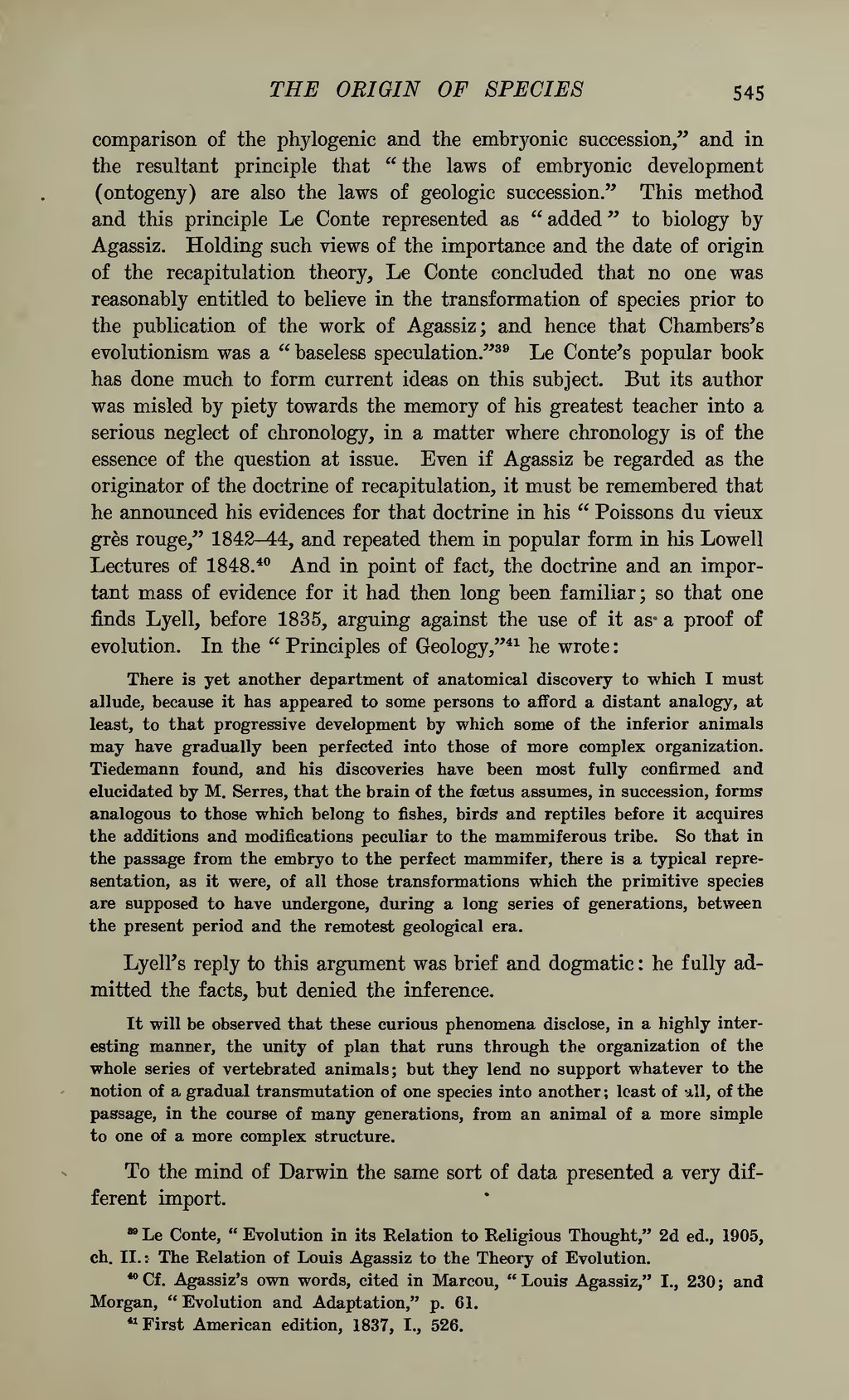comparison of the phylogenic and the embryonic succession" and in the resultant principle that "the laws of embryonic development (ontogeny) are also the laws of geologic succession." This method and this principle Le Conte represented as "added" to biology by Agassiz. Holding such views of the importance and the date of origin of the recapitulation theory, Le Conte concluded that no one was reasonably entitled to believe in the transformation of species prior to the publication of the work of Agassiz; and hence that Chambers's evolutionism was a "baseless speculation."[1] Le Conte's popular book has done much to form current ideas on this subject. But its author was misled by piety towards the memory of his greatest teacher into a serious neglect of chronology, in a matter where chronology is of the essence of the question at issue. Even if Agassiz be regarded as the originator of the doctrine of recapitulation, it must be remembered that he announced his evidences for that doctrine in his "Poissons du vieux grès rouge," 1842-44, and repeated them in popular form in his Lowell Lectures of 1848.[2] And in point of fact, the doctrine and an important mass of evidence for it had then long been familiar; so that one finds Lyell, before 1835, arguing against the use of it as a proof of evolution. In the "Principles of Geology,"[3] he wrote:
There is yet another department of anatomical discovery to which I must allude, because it has appeared to some persons to afford a distant analogy, at least, to that progressive development by which some of the inferior animals may have gradually been perfected into those of more complex organization. Tiedemann found, and his discoveries have been most fully confirmed and elucidated by M. Serres, that the brain of the fœtus assumes, in succession, forms analogous to those which belong to fishes, birds and reptiles before it acquires the additions and modifications peculiar to the mammiferous tribe. So that in the passage from the embryo to the perfect mammifer, there is a typical representation, as it were, of all those transformations which the primitive species are supposed to have undergone, during a long series of generations, between the present period and the remotest geological era.
Lyell's reply to this argument was brief and dogmatic: he fully admitted the facts, but denied the inference.
It will be observed that these curious phenomena disclose, in a highly interesting manner, the unity of plan that runs through the organization of the whole series of vertebrated animals; but they lend no support whatever to the notion of a gradual transmutation of one species into another; least of all, of the passage, in the course of many generations, from an animal of a more simple to one of a more complex structure.
To the mind of Darwin the same sort of data presented a very different import.
- ↑ Le Conte, "Evolution in its Relation to Religious Thought," 2d ed., 1905, ch. II.: The Relation of Louis Agassiz to the Theory of Evolution.
- ↑ Cf. Agassiz's own words, cited in Marcou, "Louis Agassiz," I., 230; and Morgan, "Evolution and Adaptation," p. 61.
- ↑ First American edition, 1837, I., 526.

